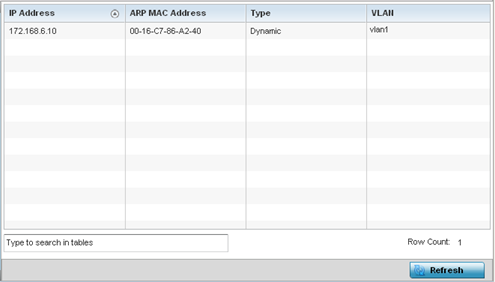ARP (Address Resolution Protocol) is a protocol for mapping an IP address to a device address recognized in the local network. An address is 32 bits long. In an Ethernet local area network, however, addresses for attached devices are 48 bits long. (The physical machine address is also known as a MAC address.) A table, usually called the ARP cache, is used to maintain a correlation between each MAC address and its corresponding IP address. ARP provides the protocol rules for making this correlation and providing address conversion in both directions.
To view the ARP entries on the network statistics screen:

| IP Address | Displays the IP address of the client being resolved on behalf of the controller or service platform. |
| ARP MAC Address | Displays the MAC address of the device where an IP address is being resolved. |
| Type | Defines whether the entry was added statically or created dynamically in respect to network traffic. Entries are typically static. |
| VLAN | Displays the name of the VLAN ID where the IP address was found. |